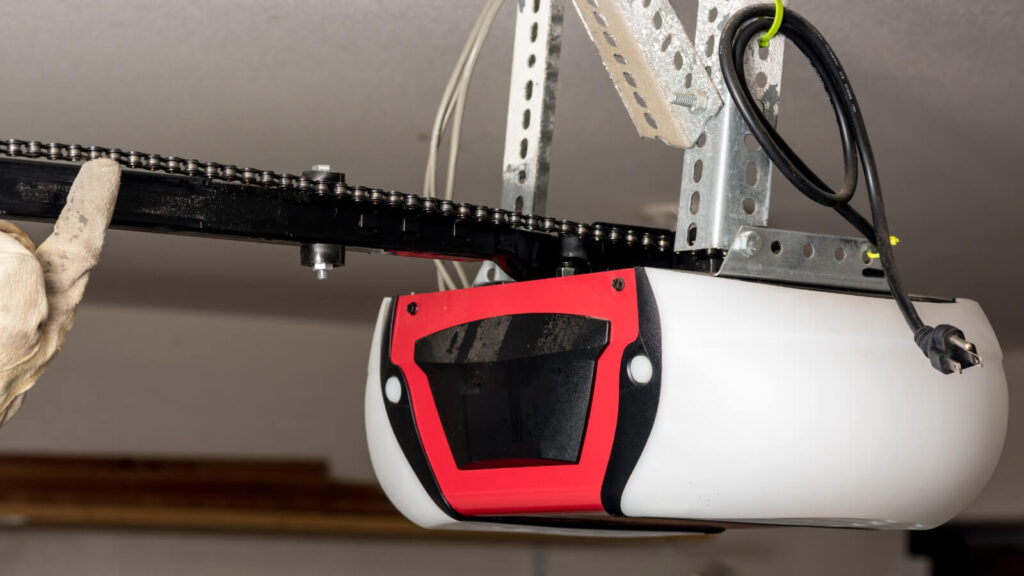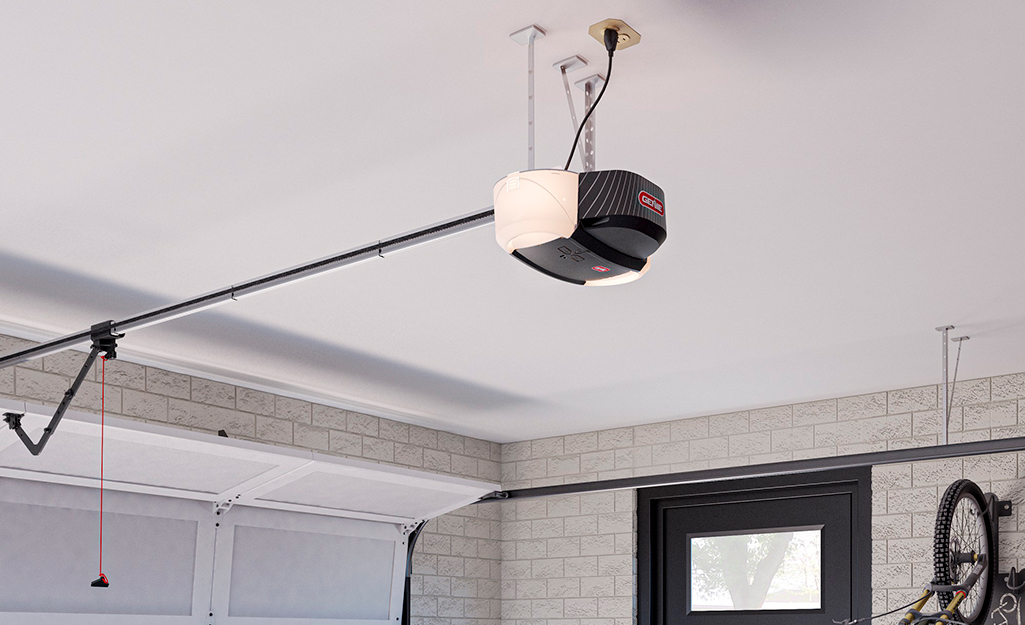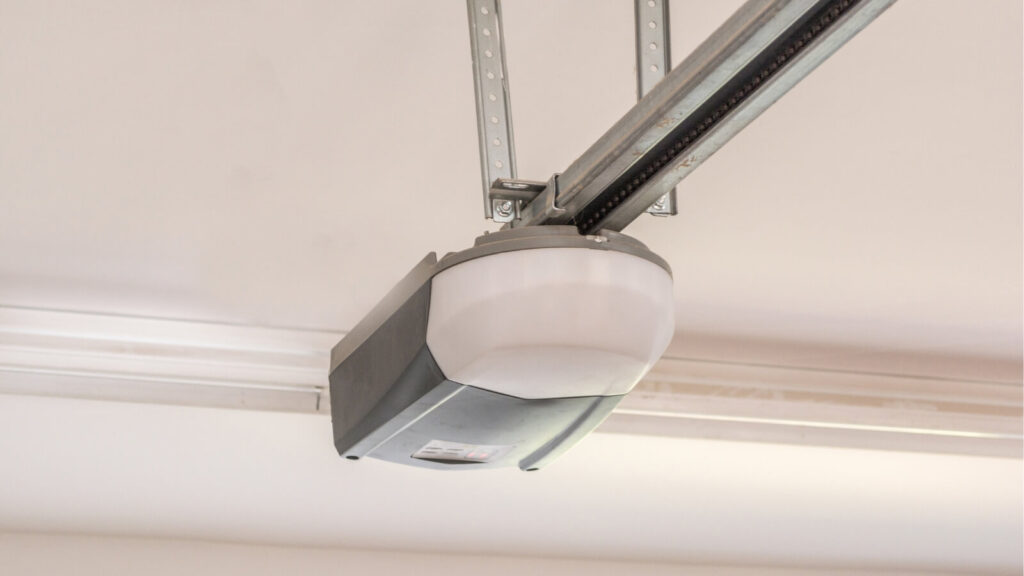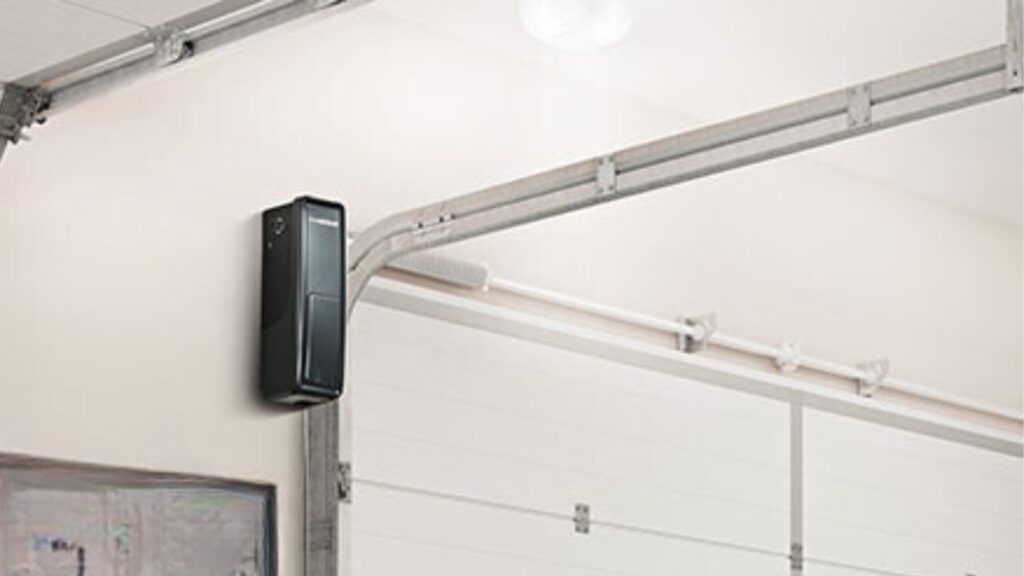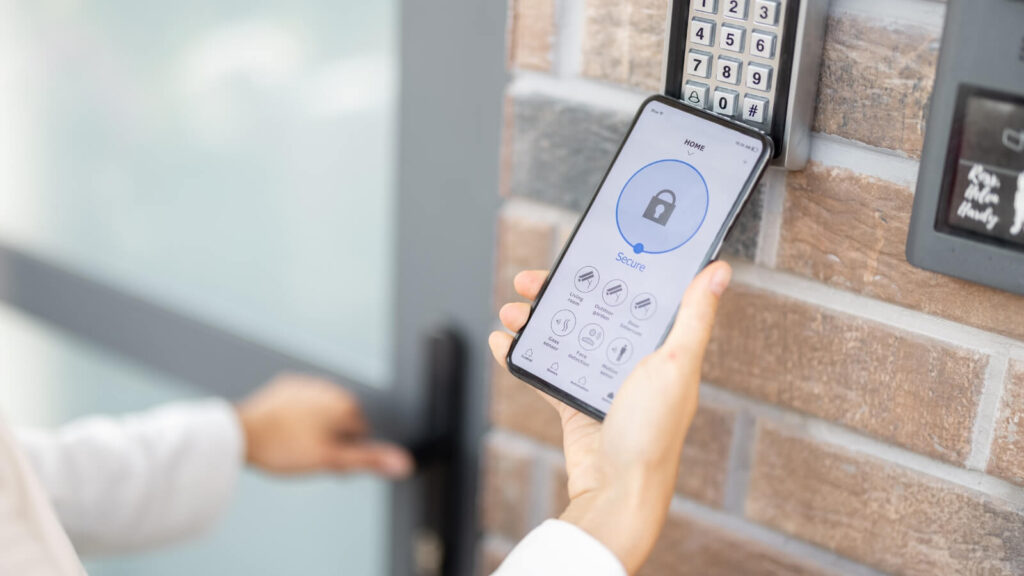Garage door openers are the quiet heroes of our homes, allowing us to access our garage doors with ease, safety, and convenience. With various types and brands available, you might be wondering what the best type is for you. It’s essential to understand what garage door opener you want and how to properly connect it to your door.
In this guide, we’ll explore different types of garage door openers, their unique features, and step-by-step instructions on how to connect them to your garage door.
Before You Buy
There are a few things you should consider before you buy or replace your garage door opener:
- Consider the size of your garage door and how frequently you use it. In a home garage, 1/2 horsepower garage door openers operate effectively with basic aluminum doors. If your garage is the main entry to your home and you have a one-piece or big door, pick a 3/4- to 1 1/4-horsepower opener.
- How important is it to have remote control and monitoring of your garage? Wi-Fi and smartphone door openers allow you to operate the door from practically anywhere. You can monitor this on your phone or tablet.
- Consider how you’ll get into or out of your garage in the event of a power outage. When the power goes out, garage door openers with battery backup allow you to open and close the garage door.
- Think about the proximity of your garage to your bedrooms or living space. Belt and wall mount openers are the most silent. This implies that attached rooms will experience minimal disruption.
Types of Garage Door Openers:
Chain Drive Openers
Known for their affordability and durability, chain drive openers use a chain to move the door along the track (similar to a bike chain mechanism). They are reliable and suitable for heavy garage doors, especially with the proper maintenance to prevent wear and tear. Their down is that they are one of the nosier garage openers due to the metal-on-metal contact.
Belt Drive Openers
These openers use a steel-reinforced rubber belt to operate the garage door, making them quieter than chain drive models. Smaller DC-powered motors are often used to open and close the door. Belt drive openers are ideal for homes with living spaces near the garage, where noise might be a concern.
Regular maintenance is advised, and these sorts of openers can be damaged by heat or humidity.
Screw Drive Openers
Screw drive openers utilize a threaded steel rod to lift and lower the door. They are known for their simplicity and require less maintenance. These are ideal for lower ceilings and are perfect for heavier, wider doors. They move slower and smoother than other types of openers, a heads up as they might be sensitive to temperature fluctuations.
Wall Mount Openers
This type of opener (also known as a jackshaft opener) is mounted on the wall beside the garage door and operates the door directly through a torsion bar. Although they are designed to hang from the ceiling, these openers are great for garages with limited ceiling space.
These openers feature a stationary motor that moves along the chain or belt to open and close the door. They are known for their quiet operation and minimal vibrations. They are easier and safer to maintain than other types.
Smart Garage Door Openers
There are many chain, belt, screw, and wall-mount garage door openers that come with smart garage capabilities. These openers can put convenience and safety in the palm of your hand. They provide numerous monitoring, control, and customization possibilities.
With remote, in-app access, you can close or open your garage from anywhere, get notifications, and change settings. Smart home integration connects your garage system to the smart hub in your home. It can also communicate with other Wi-Fi-enabled devices on the network. Bluetooth speakers, an adjustable fan, and dual-laser parking-assist modules are among the modular smart accessories.
Connecting Your Garage Door Opener: Step-by-Step:
Follow these general steps to connect your garage door opener to your door. Keep in mind that specific instructions might vary based on the brand and model you have, so refer to your opener’s manual for precise guidance.
- Assemble the Opener: Carefully follow the manufacturer’s instructions to assemble the garage door opener. This typically involves attaching the motor unit to the ceiling, installing the rail, and connecting the chain or belt.
- Attach the Trolley: Slide the trolley onto the rail and secure it in place. The trolley is responsible for moving the garage door along the rail when the opener is activated.
- Mount the Motor Unit: Attach the motor unit to the ceiling using the provided brackets and hardware. Make sure it’s securely fastened.
- Connect the Door Arm: Attach the door arm to the trolley, making sure it’s aligned properly. The other end of the arm should be connected to the garage door.
- Power and Wiring: Connect the wiring according to the manufacturer’s instructions. This usually involves connecting the control panel, safety sensors, and any accessories.
- Program the Opener: Follow the programming instructions in your opener’s manual to set up the remote control and any other accessories. Test the opener to ensure it’s working correctly.
If DIY projects aren’t for you, you can always hire a professional to find and install the proper garage door opener! Able-Lueble Overhead Doors is your go-to garage door solutions company! Whether you need a simple repair or a complete installation, our team of experienced technicians is here to help.

